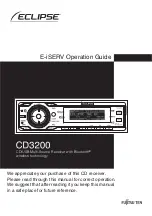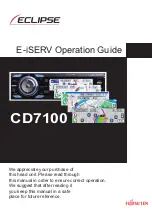
AD1849K
REV. 0
–25–
CS4215 COMPATIBILITY
The Analog Devices AD1849K SoundPort Stereo Codec is pin-
compatible with the CS4215. These chips were independently
codeveloped to a common specification provided by Sun
Microsystems, Inc. Because of their independent development,
they will differ in performance and in minor details. A board can
be designed to accommodate either chip by attending to a few
differences in their required support circuitry.
•
If consistent control information is transmitted to the Codec
during Control Mode, the AD1849K DCB handshake is
compatible with the CS4215. See text for more details.
•
The Analog Devices AD1849K uses two external capacitors
to complete its internal input filter as shown in Figure 18.
The CS4215 calls the two pins on the AD1849K for these
capacitor connections, “no connects.” By laying out a board
with these capacitors, either chip will work.
•
The AD1849K requires an external passive antialias filter as
shown in Figure 11. In contrast, the recommended input
circuit for the CS4215 is a single-pole active filter requiring a
dual op amp. Though overkill for the AD1849K, this input
circuit will work with the AD1849K as well.
•
The AD1849K was designed to require no external low-pass
filters on analog outputs. As shown in Figure 13, the
AD1849K only requires ac coupling capacitors and resistors
for line-level dc bias. In contrast, the CS4215 has a single-
pole passive filter for its recommended line-level output
circuit. Though overkill for the AD1849K, this output circuit
will work with the AD1849K as well.
•
Pin 38 (PLCC) and Pin 32 (TQFP) on the AD1849K is used
as a digital power supply. On the CS4215, this pin is a “no
connect.” We strongly recommend connecting this pin to the
digital supply. Both chips should operate in this configura-
tion. Pin 39 (PLCC) and Pin 33 (TQFP) on the AD1849K is
used as a digital ground. On the CS4215, this pin is a “no
connect.” We strongly recommend connecting this pin to the
digital ground plane. Both chips should operate in this
configuration.
•
Analog Devices recommends a 10
µ
F bypass capacitor on the
voltage reference output, CMOUT (Pin 19). Using a 0.47
µ
F
capacitor may be acceptable in many systems, however DAC
performance at low sample rates will be improved with the
larger capacitor.



































